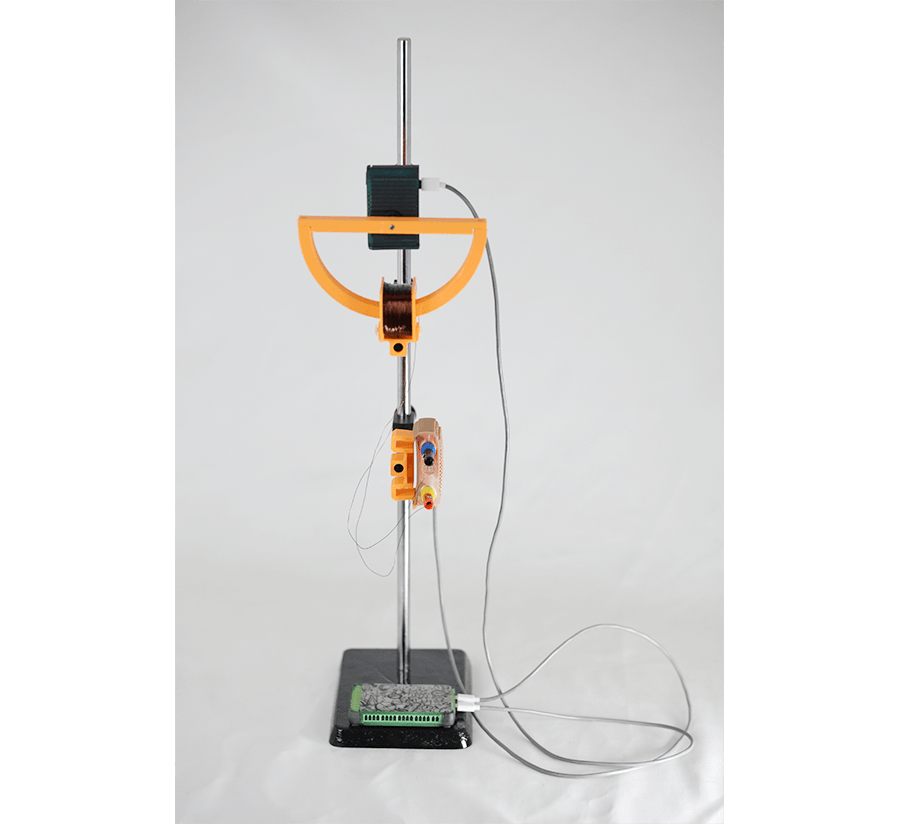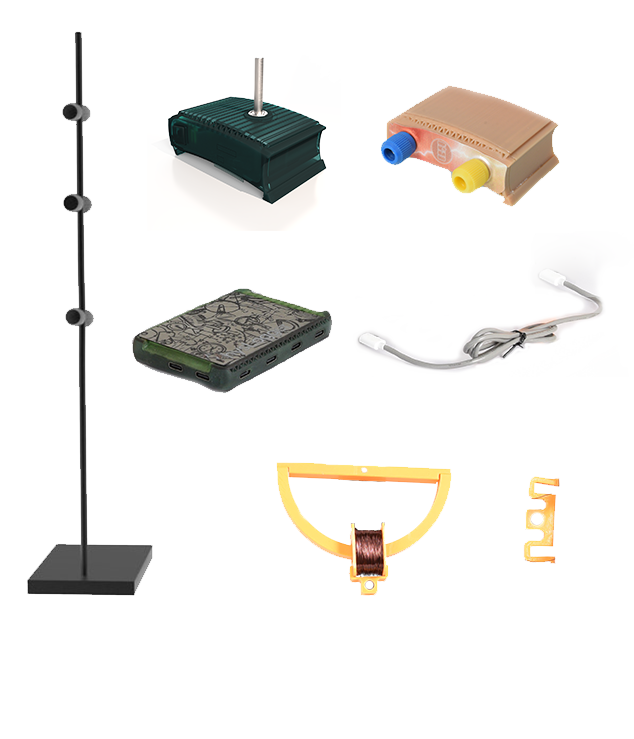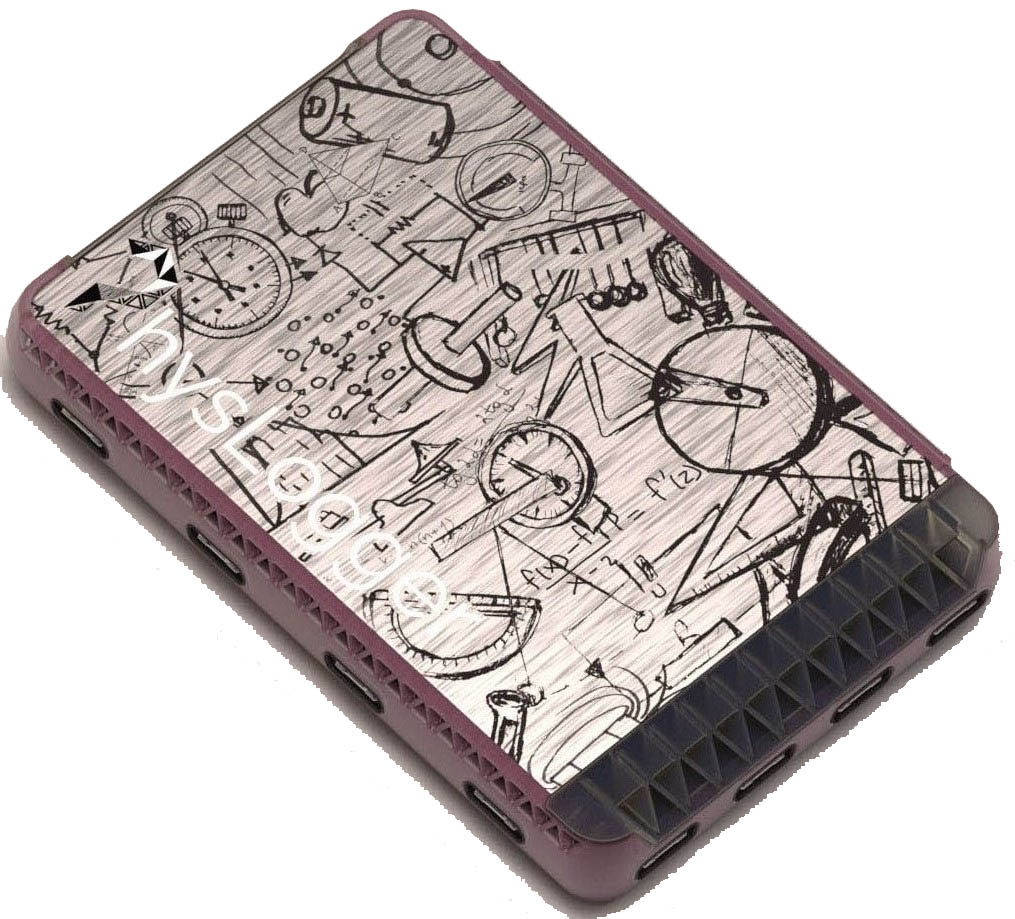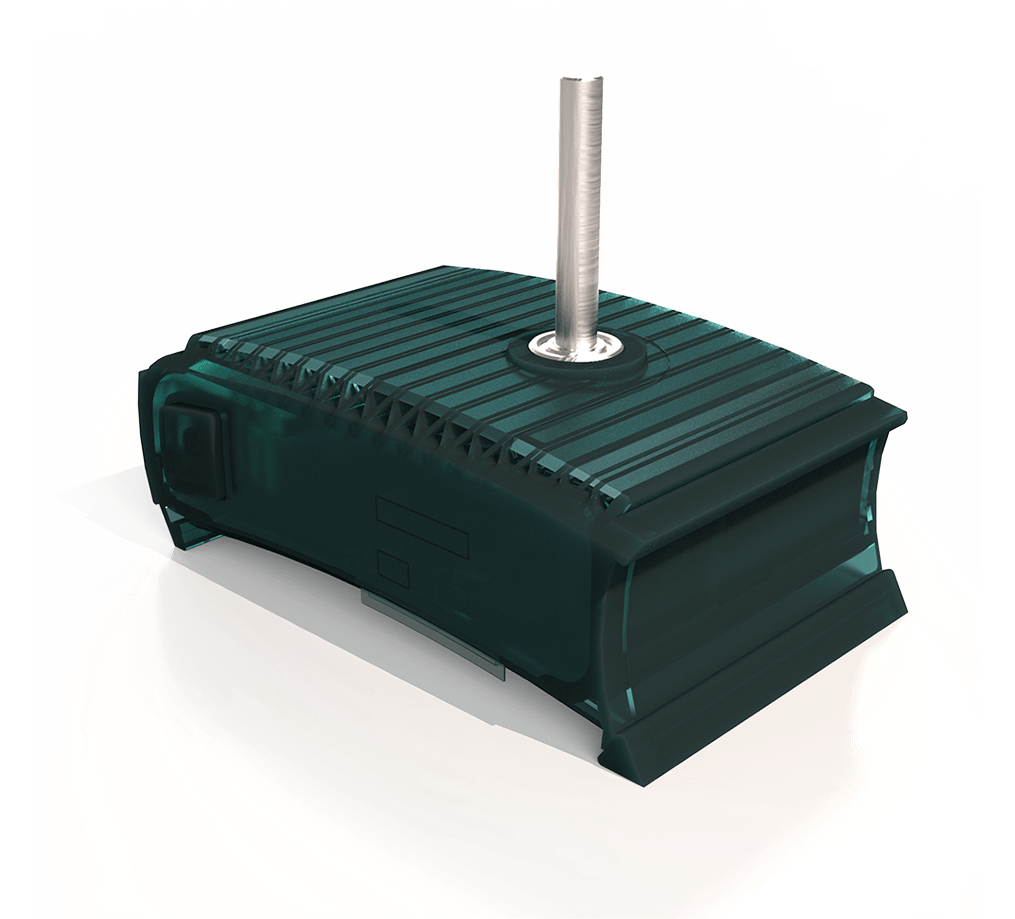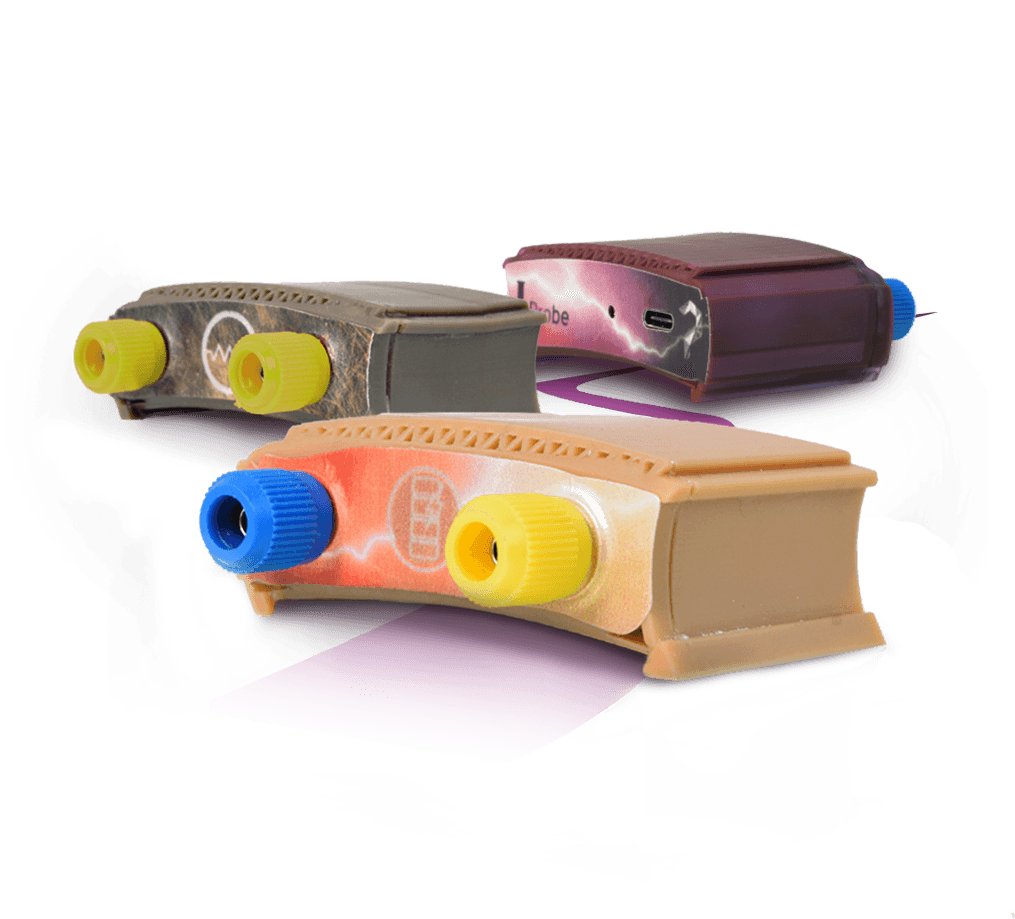This experiment reveals how an electromotive force (EMF) is induced when the magnetic flux linking a loop of copper wire changes.
The setup is composed of a sleek semi-circle made of metal with small but powerful magnets housed at its center.
The semi-circle oscillates within a hollow frame containing a loop of copper wire. We record data with a sophisticated
ensemble of tools, including a PhysLogger — our versatile data acquisition and control device — as well as a PhysCompass,
the rotary motion sensor, and a V Probe, a voltage sensing device.
PhysCompass is attached to the semi-circle, while the voltage sensor is connected to the copper wire loop.
Both of these devices are linked to the PhysLogger, which in turn is connected to a computer. The interactive
PhysLogger Desktop App records this data. Quantities like EMF, flux, angle, and angular velocity and acceleration
are plotted, compared, and analyzed. The variation of maximum EMF and angle with time are also quantitatively delved
on to understand interlinkages and phenomena like electromagnetic damping!
